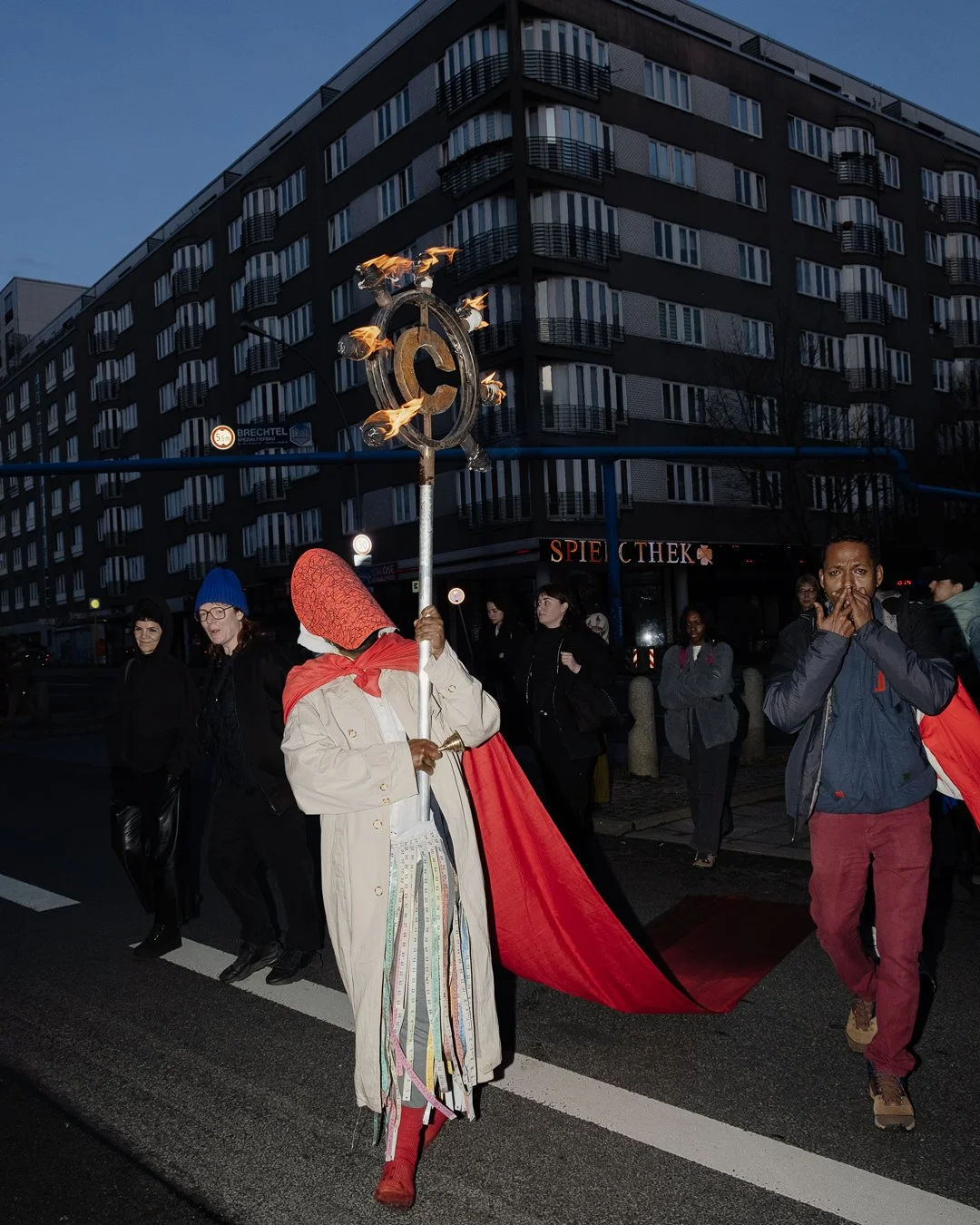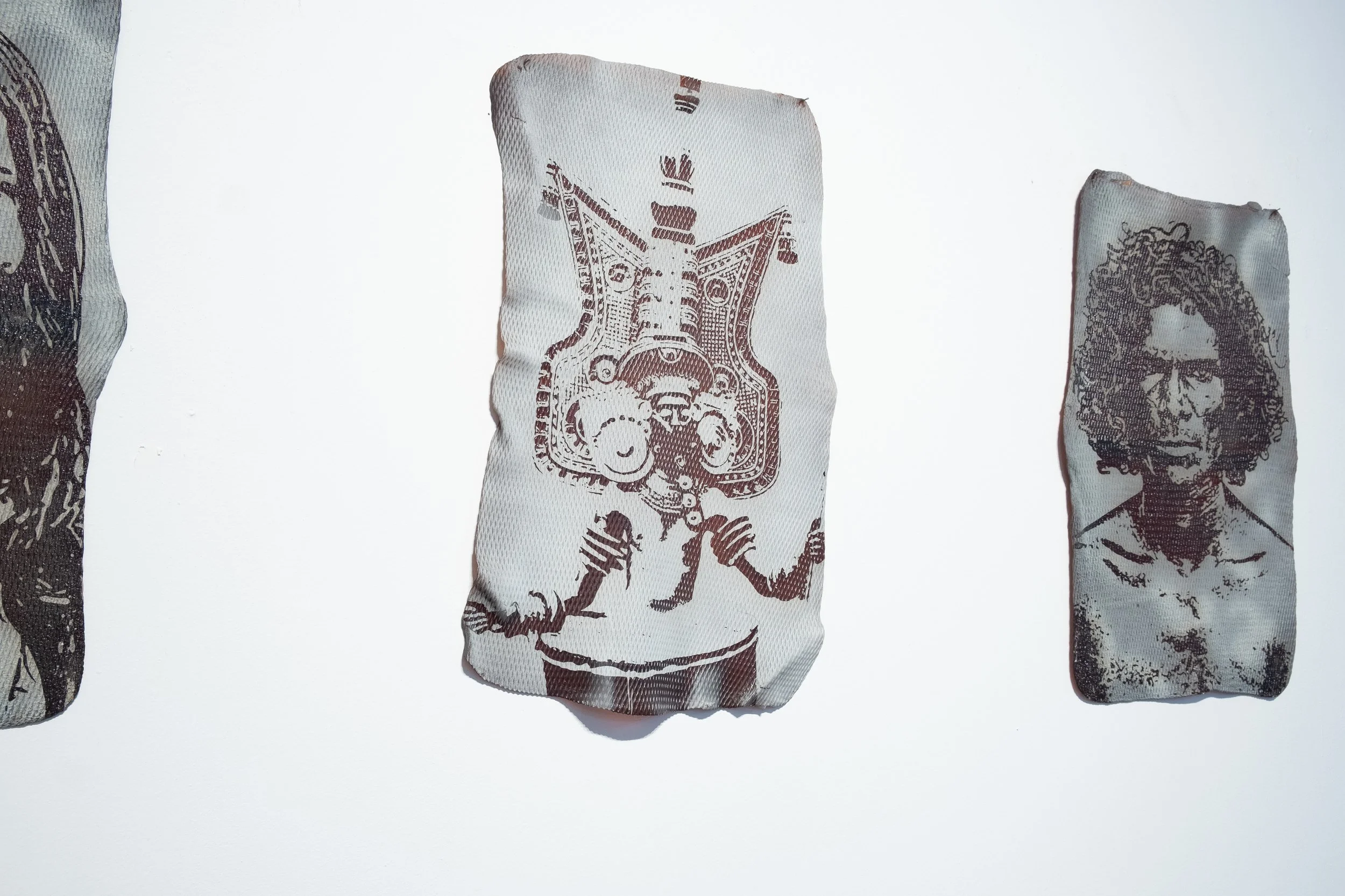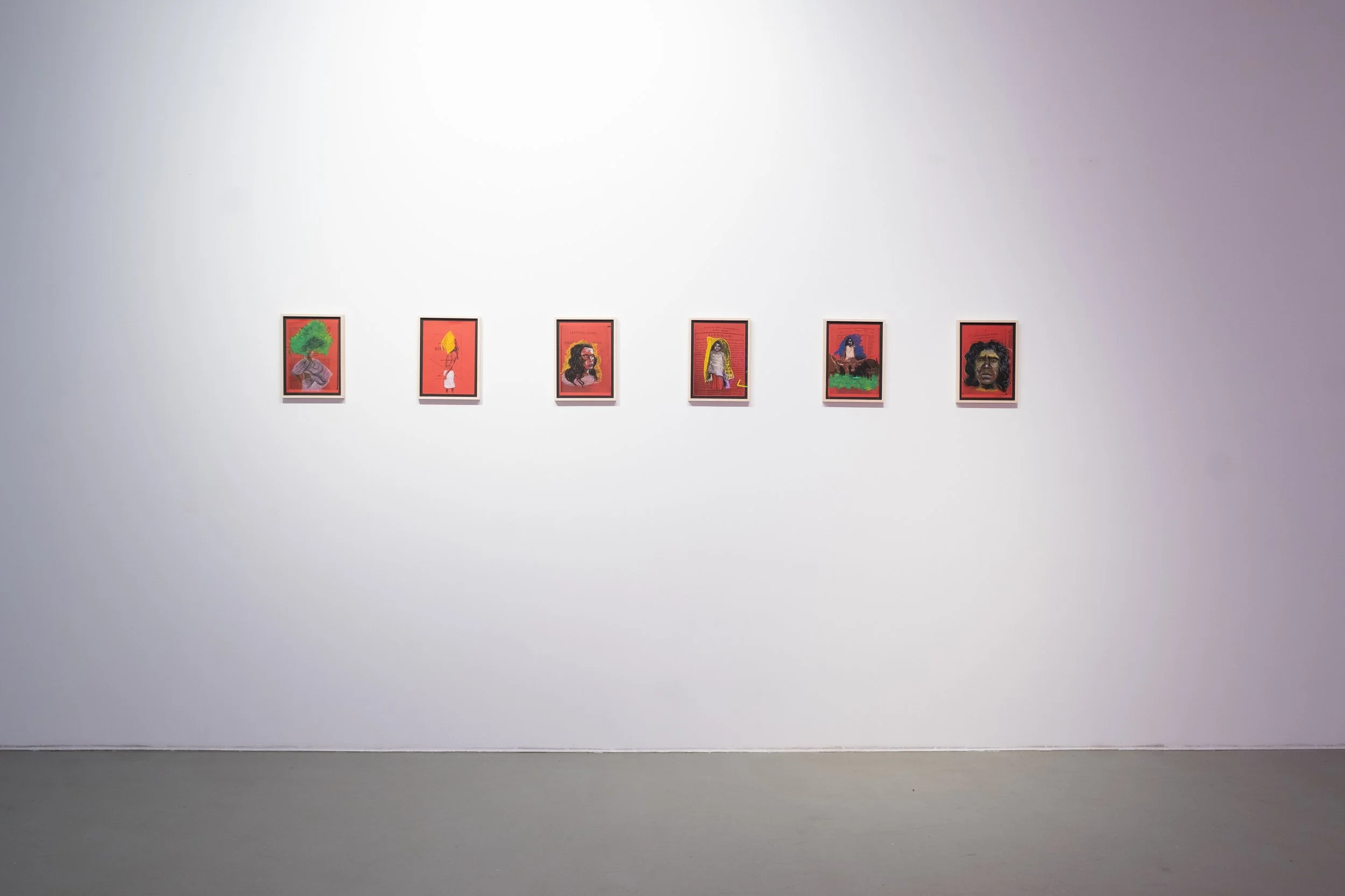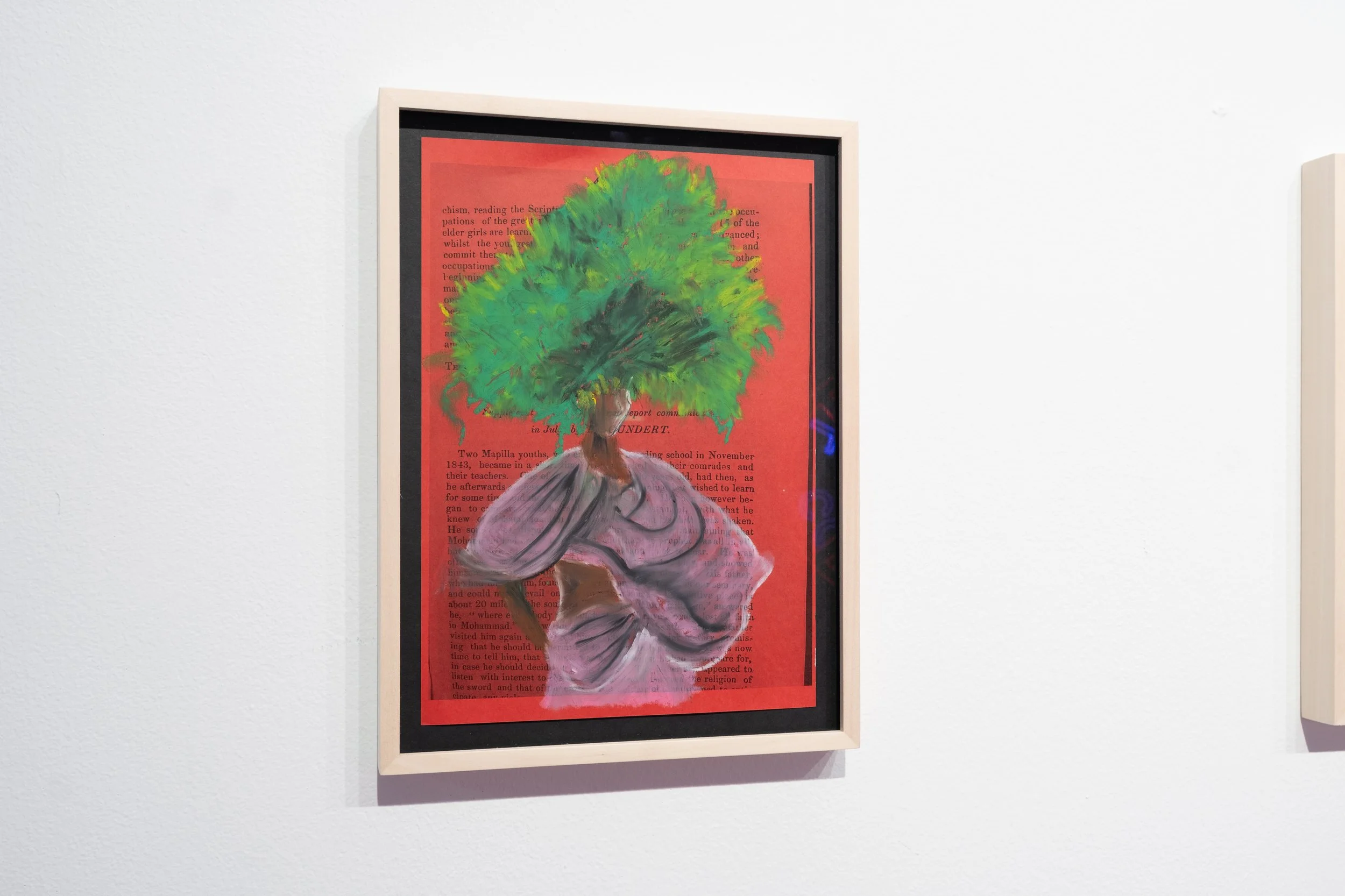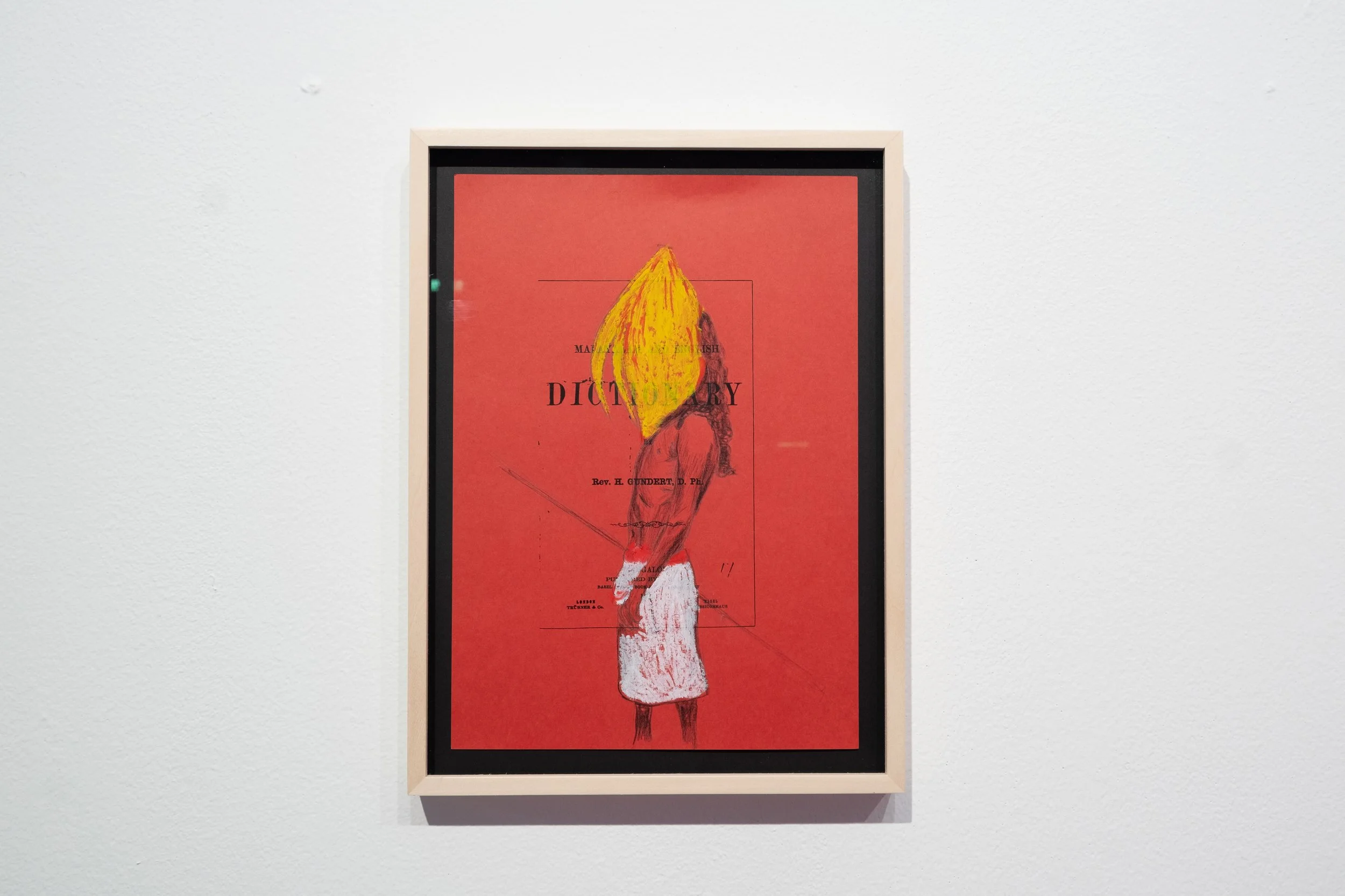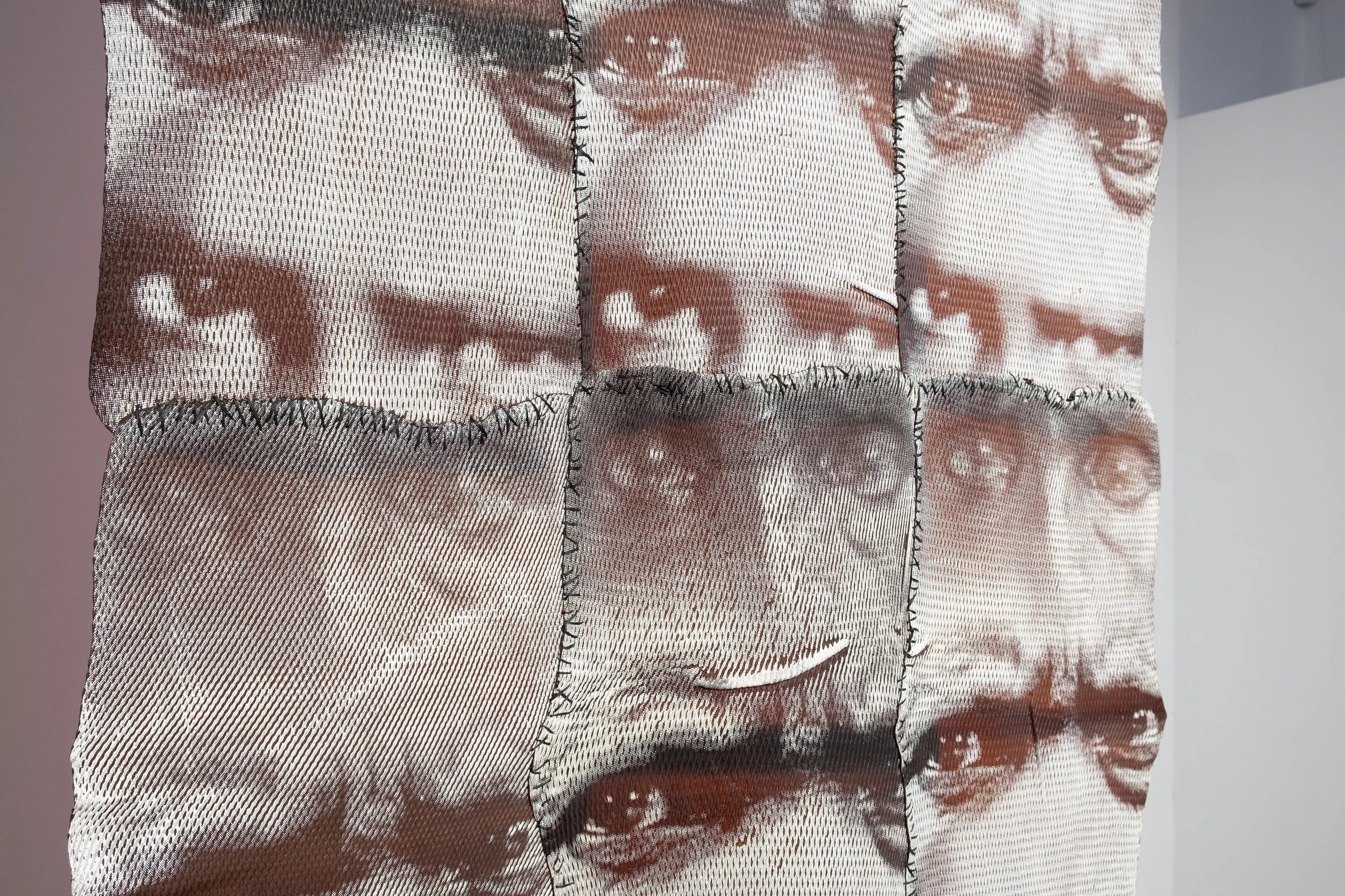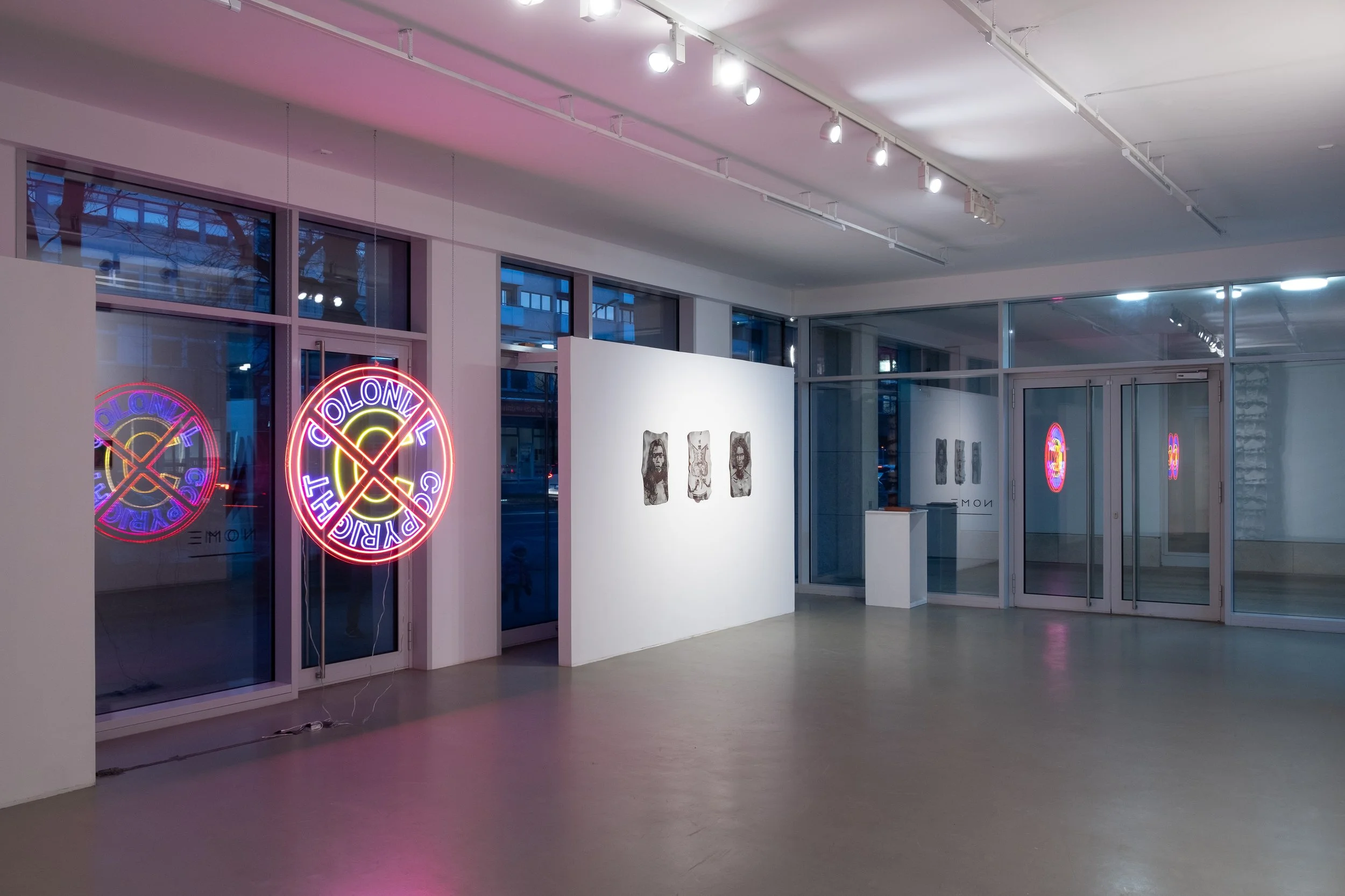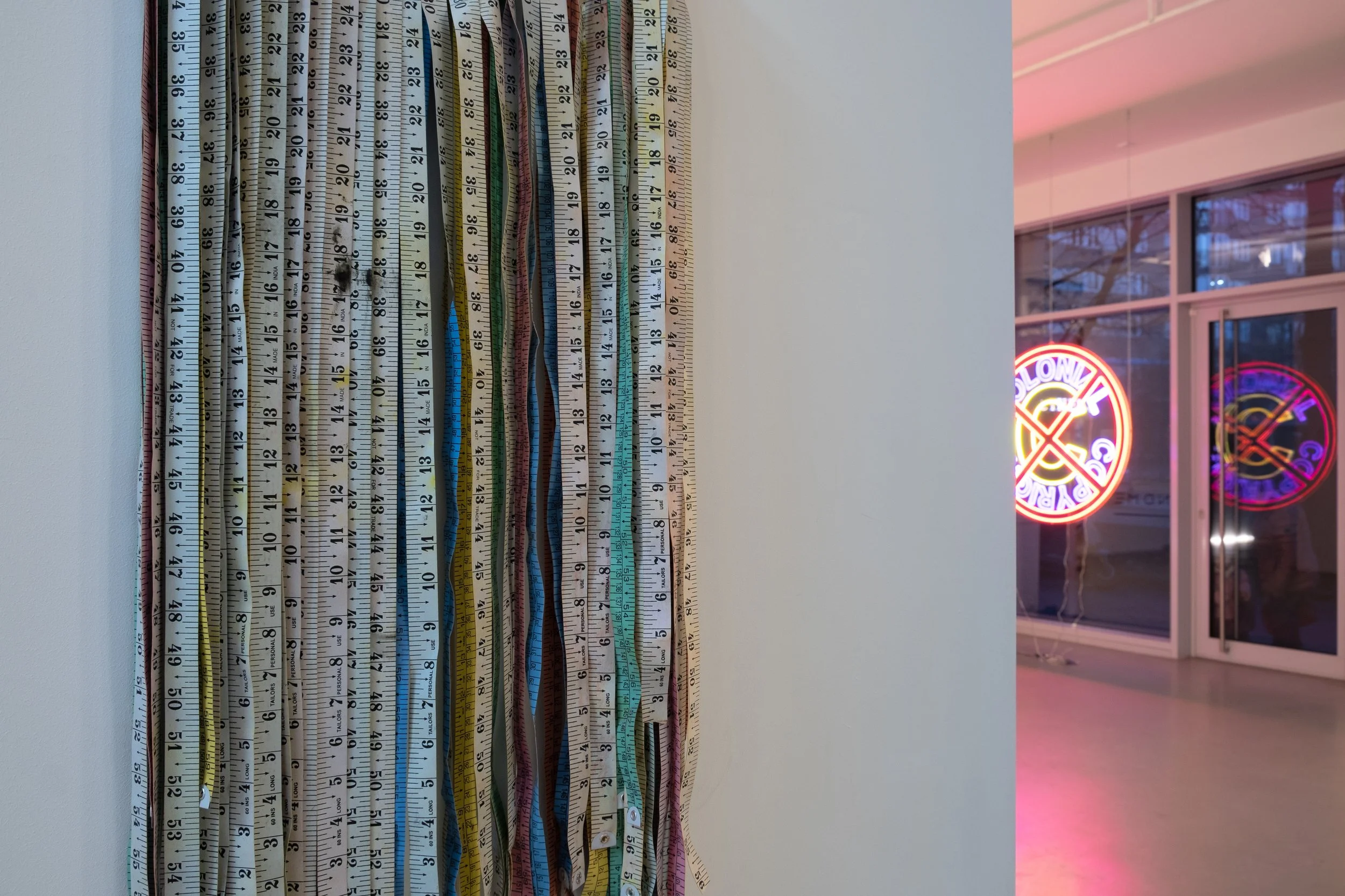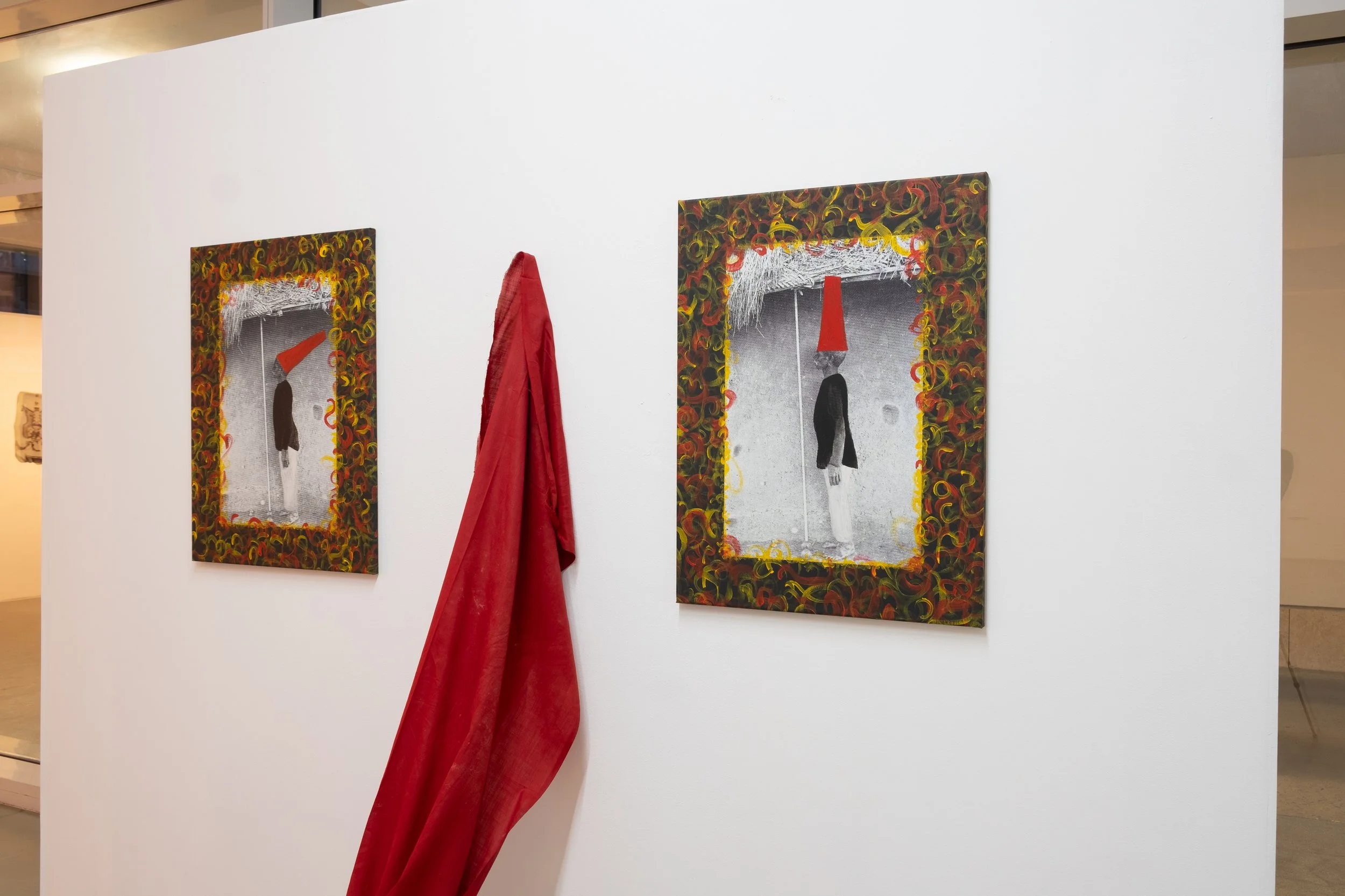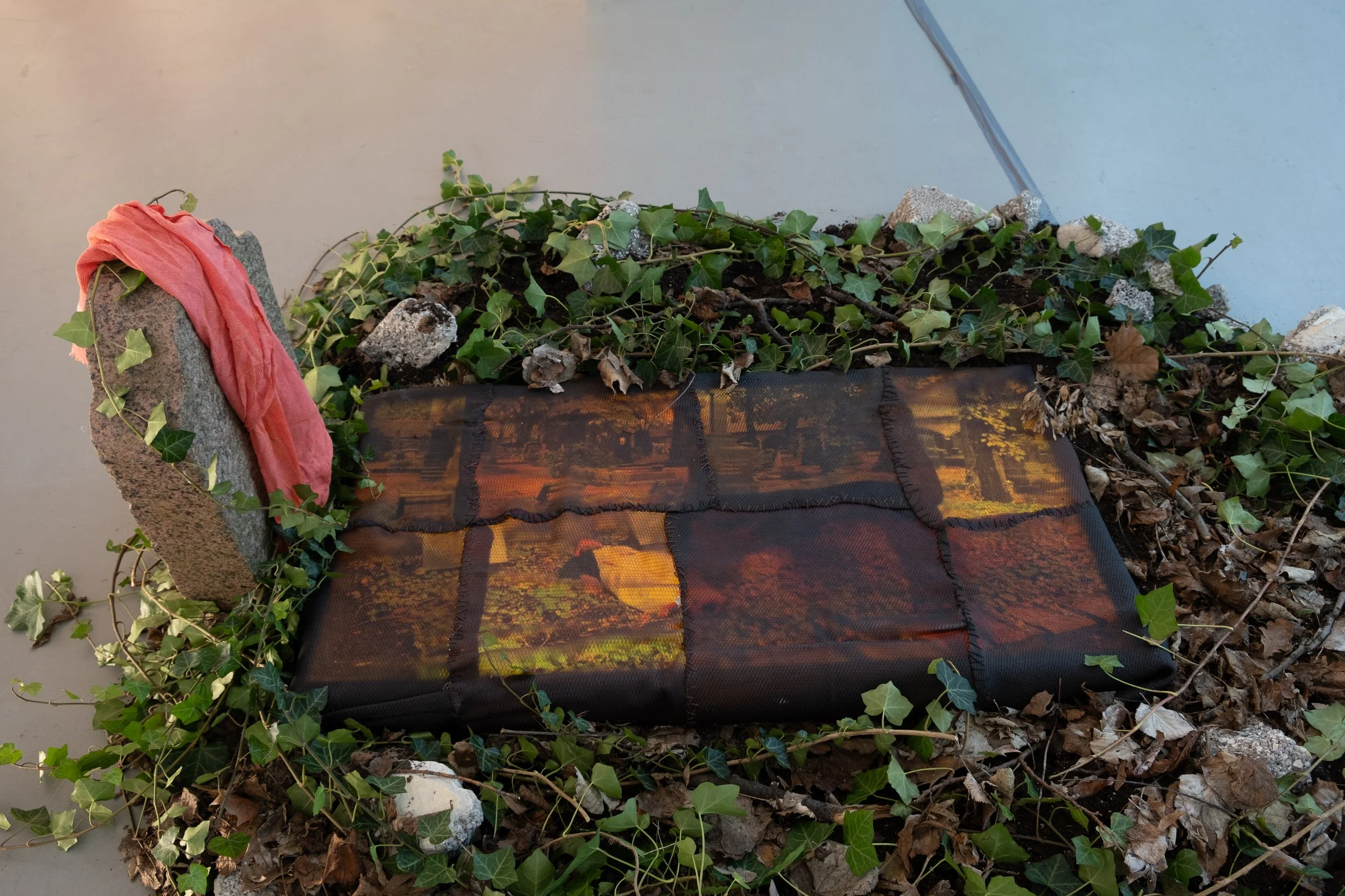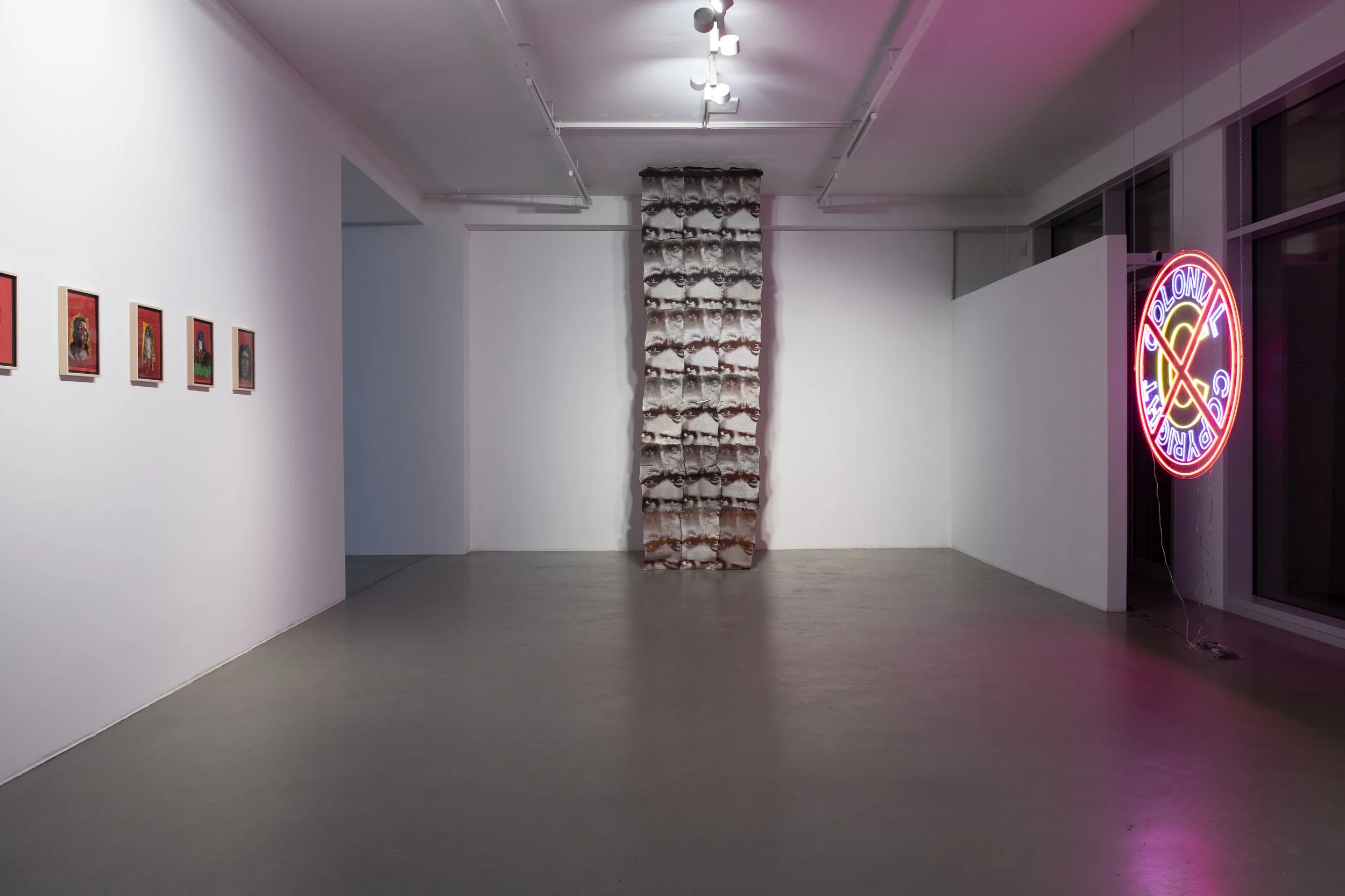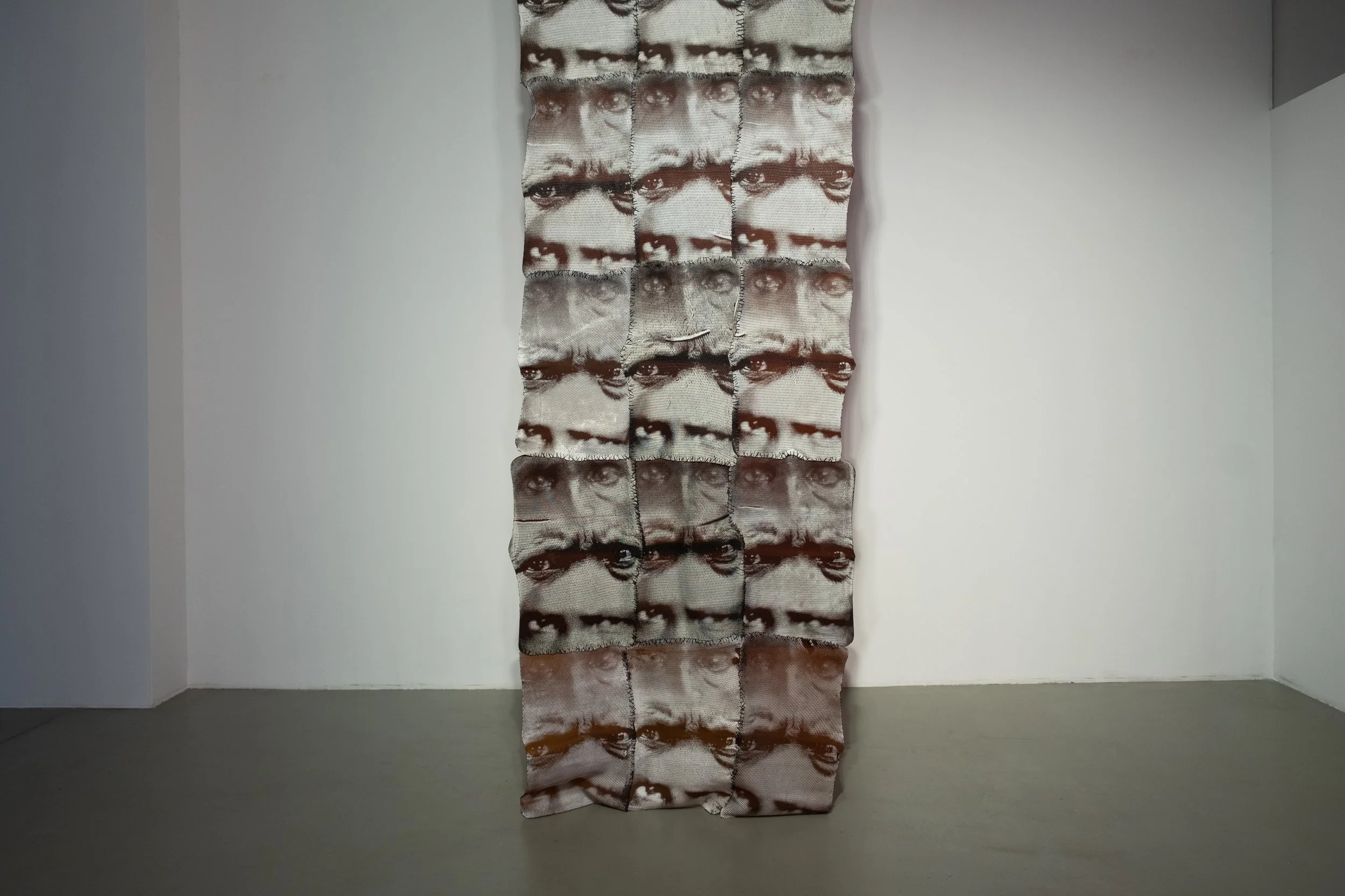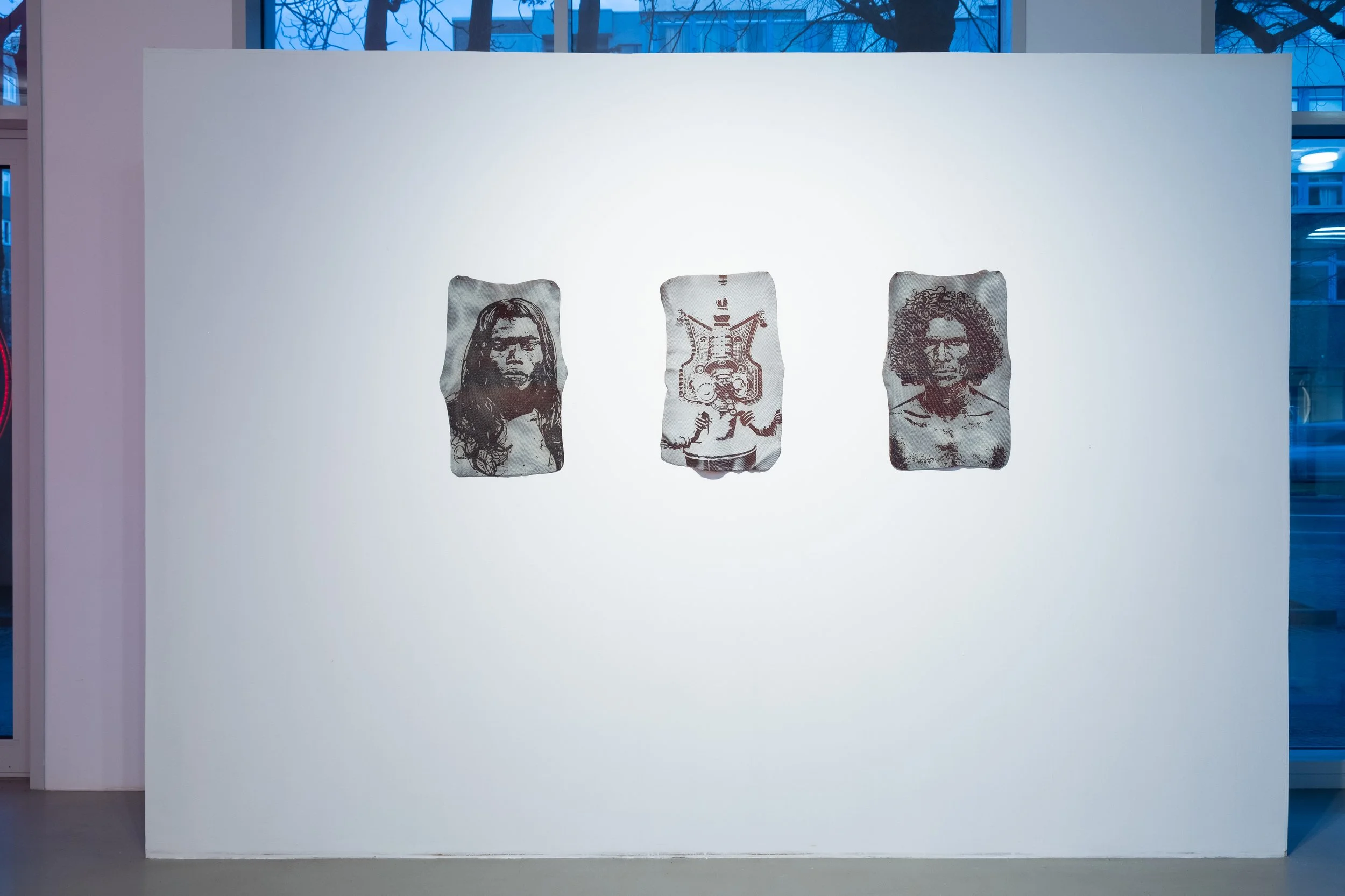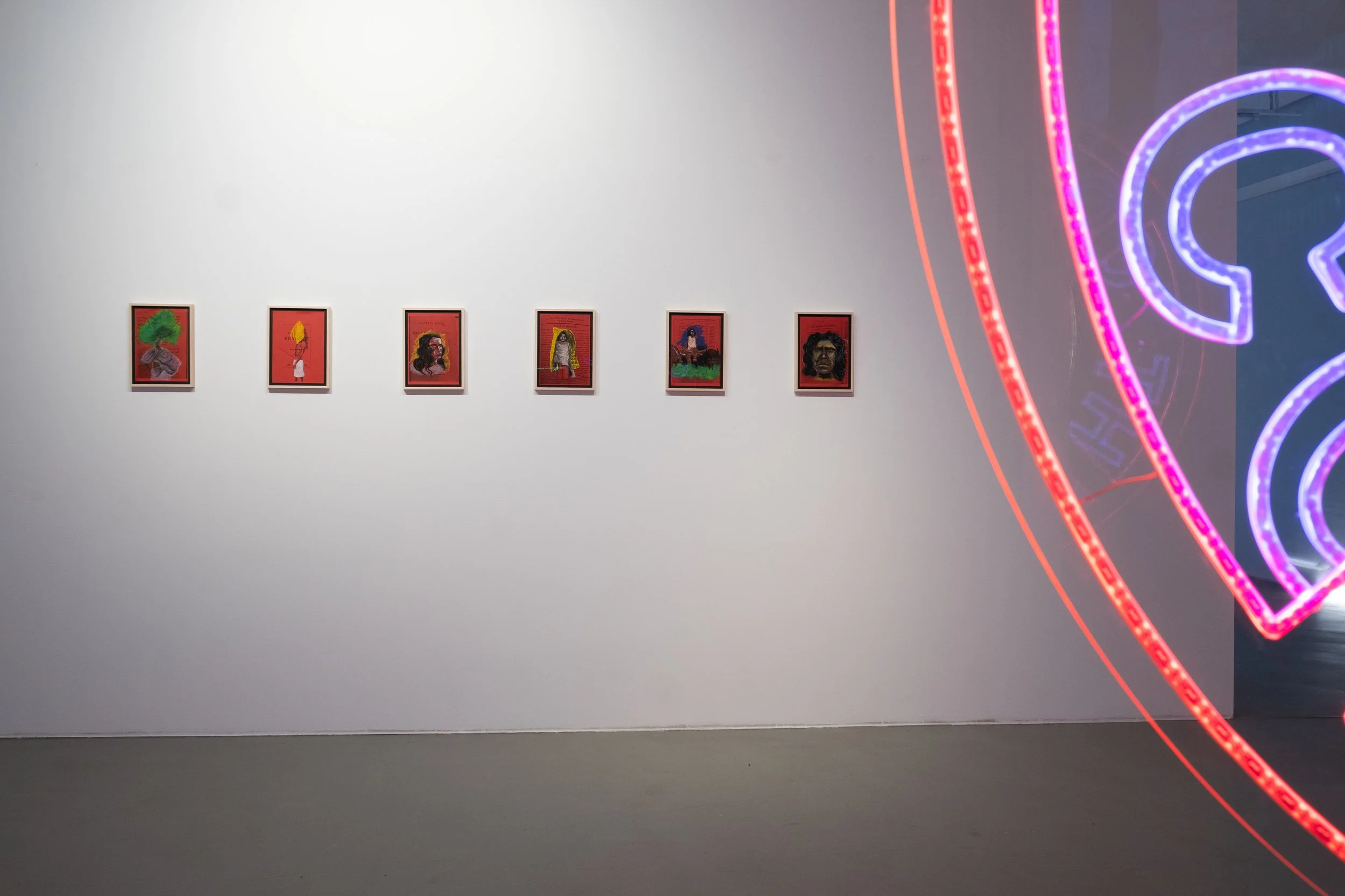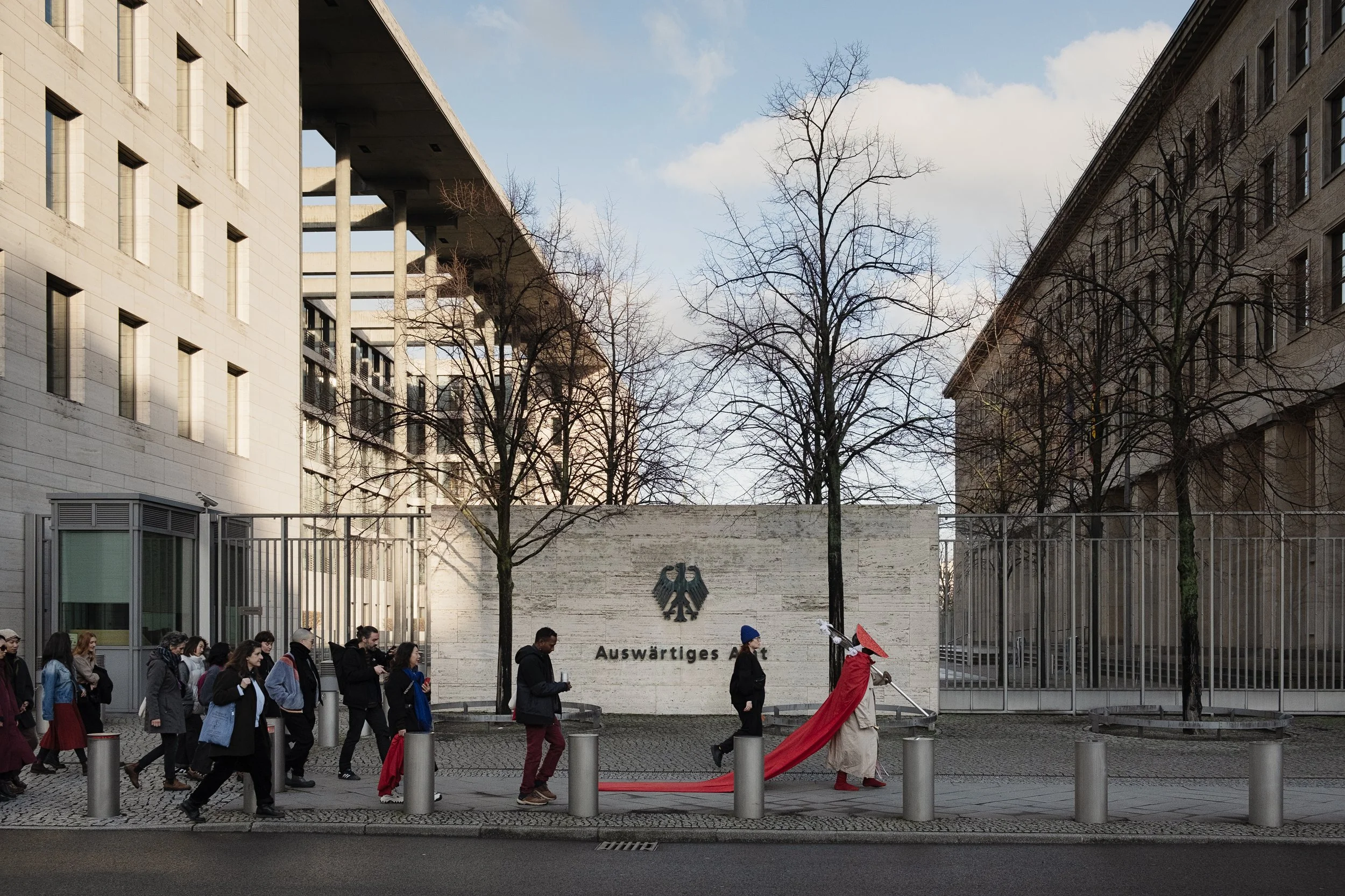
Expedition Mani – Reverberations
NOME, Potsdamer Str. 72, 10785 Berlin
Expedition Mani: a performative procession by Sajan Mani
Start at 3 pm, on 10 February 2024
Meeting point at the Sanchi Gate at Schlossplatz 5, Berlin→
Potsdamer Platz→ NOME Berlin (duration about 1.5 hours)
As the final edition of the exhibition series Speaking to Ancestors, the Dravidian artist Sajan Mani presents his exhibition Expedition Mani – Reverberations at NOME Berlin. Sajan Mani (born 1981 in Kerala, South India) is an interdisciplinary artist coming from a family of rubber tappers in a remote village in the northern part of Kerala, South India. Performing with and centering around his own "Black Dalit Body," Mani addresses the issues faced by marginalised indigenous communities in India under the oppressive environment long upheld through Brahmanic knowledge production. Mani has spent years searching for traces of his ancestors in Western image archives, including the Ethnological Museum of Berlin. It contains a large number of photographs taken during the colonial era in the South Indian Malabar region. These photographs are evidence of anthropological expeditions such as Emil Riebeck’s in 1882 in the service of colonialism. In these early colonial photographs, indigenous communities were observed, measured, and inventoried through the European gaze.
The exhibition Expedition Mani – Reverberations is an interim report of Mani's artistic research. At the centre of the exhibition is his “body” as a means of resistance – an interface between the past and present. He metaphorizes his body as a socio-political projection surface, confronting his audience with pain, shame, fear, and power. Through installations, videos, and drawings activated by his performance, Mani engages in an imaginary dialogue with his ancestors. He allows the contradictions of our present to reverberate under the weight of the colonial past.
Mani's performance Expedition Mani (2024) is inspired by the ritual Gulikan Theyyam, a popular ritual dance in the Dravidian tradition from Kerala, where he comes from. In this ritual, human bodies of a lower-caste ceremonially transform into those of deities. Expedition Mani represents a physical and discursive challenge to the hegemonic thinking that western archives narrate. Through ritualised chants and dances, Mani invites the visitors to become a part of a performative procession from The Gate of Sanchi at Schlossplatz, Berlin to Potsdamer Platz and finally to NOME Berlin, where the exhibition will be inaugurated by his arrival. The artist is going to embody the demi-god Gulikan, a Dravidian power worshipped as one of the snake deities whose duty is to protect the Scheduled Castes and Tribes from environmental problems. In the exhibition space, Mani installed a neon sign showing a crossed C for Colonial Copyright (2024) right at the entrance. Alongside colourful drawings depicting hybrid humans and more-than-human species against the backdrop of magazines from the region Malabar reflecting their peoples own history, ritual music from Kerala, and the costume and the instrument he wore during the performance, the exhibition evolves into a resonance space echoing the resurrection of his ancestors’ own narratives. Mani creates a "counter-gaze" on the European eye during the era of colonialism. His installation Gazing back (2024), a serigraph on natural raw rubber sheets, a medium with a deep connection with the artist’s family legacy of labor, depicts a series of enlarged eyes of his portrayed ancestors, who were then captured by Europeans as "foreign" and "different" for their inventory purposes. The silkscreened rubber sheets have been sewn together by the artist to form a collective memory confronting visitors to the exhibition. Also, the monitor included in his video installation Dream walks of a Haemodracon riebeckii (2024) is rubber-wrapped, surrounded by a pile of fresh soil and a stone. It shows the artist in traditional attire visiting the grave of Emil Riebeck (1853-1885) in Halle-Saale, Germany. Time, space, and history collide in this work, raising questions about what it means to encounter beyond ideologies, what it means to be dead or alive, who ultimately measures whom, and what colonialism has ultimately left behind in the present.
https://www.speakingtoancestors.de/sajan-en/
